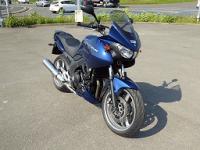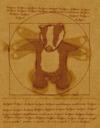The need to meet emissions regulations has forced engine manufacturers to do their best to reduce fuel consumption. During an overrun condition, where you're traveling at perhaps 5000rpm and decide to slow down by closing the throttle, in most cases the ECU stops pulsing the fuel injectors. This is probably true for all fuel injected bikes, cars and vans made in the last 15 years or so.
The transition between pulsing and not pulsing can sometimes feel harsh when riding smoothly. My negative experience has been when riding around a couple of roundabouts, downhill, I back off the throttle a little to control the speed, but the fuel-cut process begins and I then I slow down more than I expected, unsettling the bike a little.
When riding using all the beans it's not so much of a problem, but if you're trying to take it easy with a pillion on board it makes the bike feel more nervous. Different manufacturers try to deal with it in different ways but ultimately a hard cut-off in fuel delivery is reached quickly, and I think some reports of modern bikes feeling more 'jerky', than carburetted bikes, can be due to the implementation of this system.
The system I'm working on aims to create phantom injection pulses during this fuel-cut period.in an attempt to reduce the negative effects and harshness of fuel-cut, by trying to provide a more carburetted feel !
Interfacing to the injectors is easy, one side of the injector has a constant 12V supply, and to force it to inject fuel the ECU pulls the other side of the injector coil to ground briefly
A master timing signal is required. Initially I wanted to use one of the phases from the alternator stator, which has 6 AC sinewaves per crank revolution, but that was electrically too noisy to be reliable. The crank position hall effect sensor was tested, which a very clean AC pulsed signal once per crank revolution, but requires rectification and filtering. So I moved to using the Cam sensor, which is also called the 'cylinder identification' sensor by Yamaha. The neat thing here is the output from this sensor works on 5V logic level and outputs 1 small pulse per cam revolution, which equates to 2 crank revolutions
The two signals from the injectors are taken from the ECU switched side, and all 3 signals connect to a PIC microcontroller, through fusible resistors and optical isolators.











